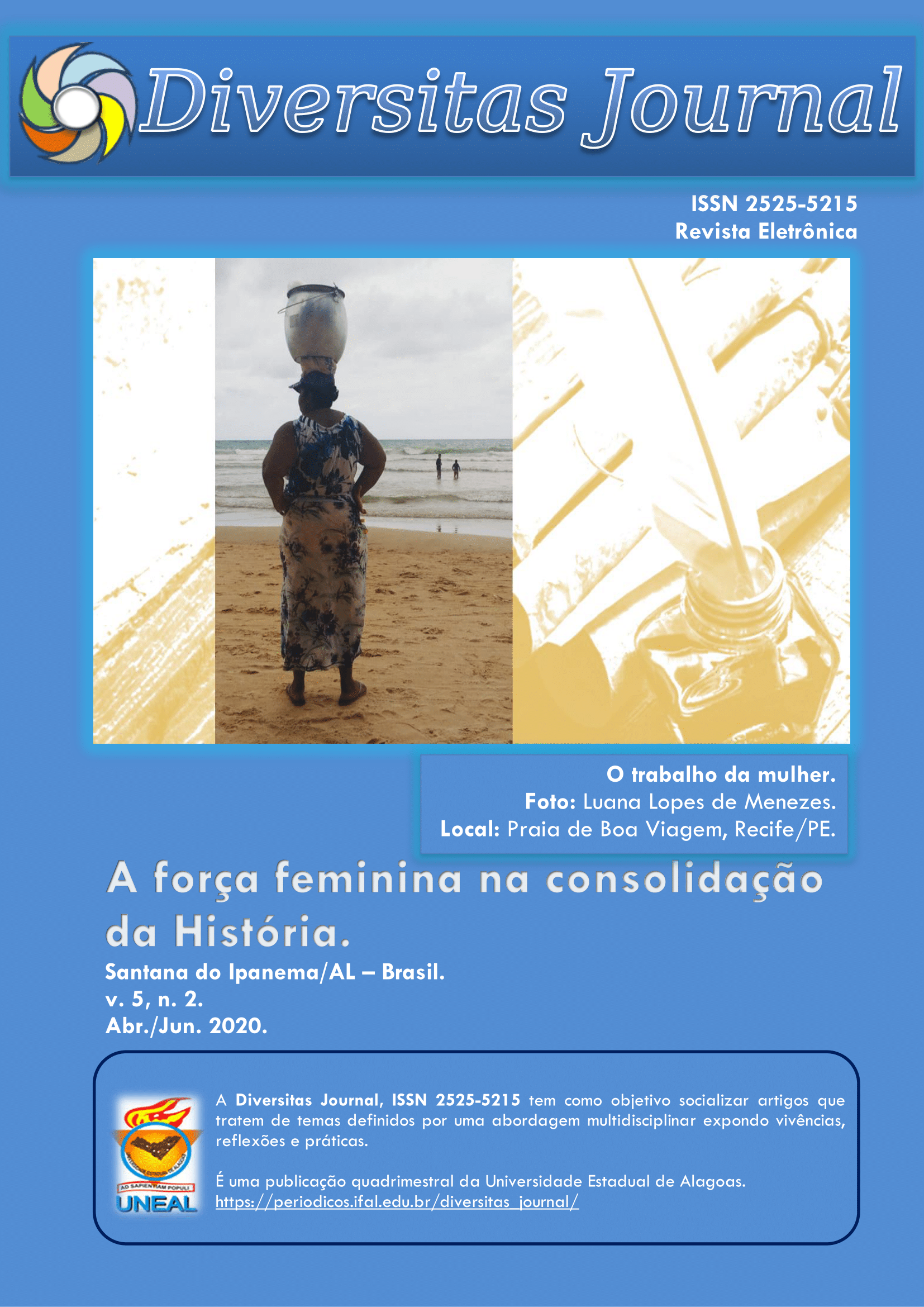Utilização da etnozoologia e educação ambiental para desvendar a concepção das crianças em relação aos anfíbios anuros
DOI:
https://doi.org/10.17648/diversitas-journal-v5i2-726Abstract
ABSTRACT: The absence of knowledge about anuran amphibians can lead to the banal extermination of species. Ethnozoology studies the relationship between human cultures over animals. The study aimed to verify the use of ethnozoology and environmental education can be lead as tools to change students' vision on anuran amphibians, aiming at the conservation of being natural environment and making possible environmental multipliers. Study carried out with 30 students, aged between 11 and 13 years, from the State School Dr. José Tavares, located in Arapiraca, state of Alagoas. A questionnaire was applied before the intervention, with simple questions, in order to verify the students' perception of anuran amphibians. Afterwards a lecture was carried out with the purpose of transmitting information about the anuran amphibians, after which the questionnaire was reapplied to verify if there were changes in the students' thinking regarding these animals. It was noticed that 89% of the students did or are faced with scenes of mistreatment to the anuran amphibians and 85% did not know the importance of these animals in the environment. However, we saw that after the intervention, the primitive conception of the students changed by 100% and everyone understood the importance of amphibians in the environment. It is clear that intervention through environmental education improves attitudes, thus promoting a better interaction between humans and other animals, contributing to the conservation and protection of wildlife.
KEYWORDS: biodiversity; extinction; zoology.
Metrics
References
AGUIAR, A.R.; ARAÚJO JR, C. A. P; FERREIRA, K. G. 2011. Percepção sobre anfíbios em estudantes universitários e populares de comunidades interioranas do estado do Rio Grande do Norte. In SEABRA, G. & MENDONÇA, I. 2011. Educação Ambiental: responsabilidade para a conservação da sociobiodiversidade. Editora Universitária da Universidade Federal da Paraíba - UFPB. pp 169-174.
ARAÚJO, S. A. 2007. Paradoxos da modernidade: a crença em bruxas e bruxaria em Porto Alegre. Tese de Doutorado, Programa de Pós-graduação em Antropologia Social, Instituto de Filosofia e Ciências Humanas, Universidade Federal do Rio Grande do Sul – UFRGS, 246 p.
BERNARDE, P. S. 2012. Anfíbios e Répteis. Introdução ao estudo da Herpetofauna Brasileira. Curitiba. Anolis Books. 320p.
BERNARDE, P. S. ANIMAIS “NÃO CARISMÁTICOS” E A EDUCAÇÃO AMBIENTAL, Editorial, v.5. n.1. p.1-7. ano 2018.
FUNASA, Fundação Nacional de Saúde. Manual de diagnóstico e tratamento de acidentes por animais peçonhentos. Brasília, 1998. 131p.
GOUVEIA, R.V.; NETO-SILVA, D.A.; SOUSA, B.M.; NOVELLI, I.A. Evaluation of injuries caused by anthropic action in snakes from Brazil. Braz. J. Biol, v.75, n.3, p.535- 540, 2015.
IBGE. Instituto Brasileiro de Geografia, 2016. Disponível em http://cidades.ibge.gov.br/xtras/perfil.php?codmun=270030. Acessado em 15 de setembro de 2018.
MASON, O. T. 1899. Aboriginal American zootechny. American Anthropologist, vol.1, n.1, pp. 45-81.
MEDEIROS, A. B.et al. A Importância da educação ambiental na escola nas séries iniciais. Revista Faculdade Montes Belos. Belo Horizonte, v. 04, n. 01, p. 22-26, 15 set 2011.
POSEY, D. A. 1986. Entomologia de tribos indígenas da Amazônia. In RIBEIRO, D. (ed.). Suma Etnológica Brasileira. Vozes/Finep. . v.1, pp. 251-272.
RESTREPO, L. C. O direito à ternura. 3. ed. Petrópolis, 2001.
RIBEIRO, C. D. L.; RIBEIRO, P. P.; IRIAS, N. G. & SILVA, M. T. H. 2012. Educação Ambiental: Desvendando a concepção das crianças em relação aos anfíbios anuros. Revista Mediação, v.1, pp. 54.
SILVA, S.G.; MANFRINATO, M.H.V.; ANACLETO, T.C.S. Morcegos: percepção dos alunos do Ensino Fundamental 3º e 4º ciclos e práticas de Educação Ambiental. Ciênc. Educ, v.19, n.4, p.859-877, 2013.
TOCHER, M.D. 1998. Diferenças na composição de espécies de sapos entre três tipos de floresta e campo de pastagem na Amazônia central. In GASCON & MONTINHO, P. (Eds.) Floresta Amazônica: dinâmica, regeneração e manejo. INPA, Manaus. pp. 219-233.
Downloads
Published
How to Cite
Issue
Section
License
Copyright (c) 2020 Jéssika Lima, Carlos Miguel Azarias dos Santos, Cristiane Kelly Aquino dos Santos

This work is licensed under a Creative Commons Attribution 4.0 International License.
The Diversitas Journal expresses that the articles are the sole responsibility of the Authors, who are familiar with Brazilian and international legislation.
Articles are peer-reviewed and care should be taken to warn of the possible incidence of plagiarism. However, plagiarism is an indisputable action by the authors.
The violation of copyright is a crime, provided for in article 184 of the Brazilian Penal Code: “Art. 184 Violating copyright and related rights: Penalty - detention, from 3 (three) months to 1 (one) year, or fine. § 1 If the violation consists of total or partial reproduction, for the purpose of direct or indirect profit, by any means or process, of intellectual work, interpretation, performance or phonogram, without the express authorization of the author, the performer, the producer , as the case may be, or whoever represents them: Penalty - imprisonment, from 2 (two) to 4 (four) years, and a fine. ”


















